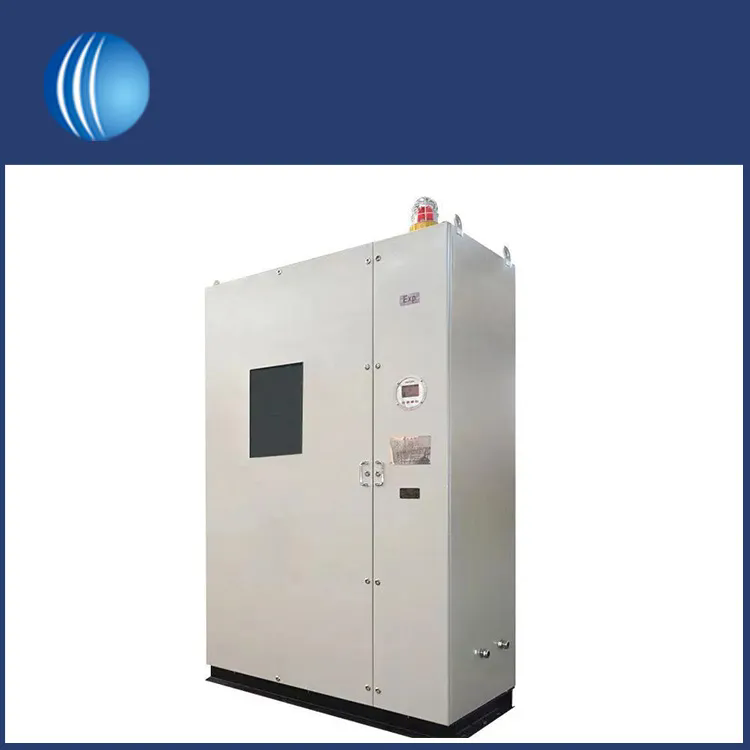Free Standing Enclosures: A Comprehensive Q&A Guide
2024-10-23
Free standing enclosures play a crucial role in protecting equipment and components from environmental factors while providing a functional and organized space. In this blog, we will address common questions about free standing enclosures, their applications, benefits, and selection criteria.
What Are Free Standing Enclosures?
Free standing enclosures are protective housings that can stand independently without requiring additional support. They are typically used to safeguard sensitive equipment, controls, or systems from environmental elements such as dust, moisture, and mechanical impacts. These enclosures are versatile and can be made from various materials, including metal and plastic.
What Are the Main Applications of Free Standing Enclosures?
Free standing enclosures are used in a variety of applications across different industries, including:
Industrial Equipment: Protecting electrical and electronic controls in manufacturing plants.
Telecommunications: Housing communication devices and networking equipment.
Utilities: Protecting equipment in power generation, water treatment, and other utility sectors.
Data Centers: Enclosing servers and networking equipment to maintain optimal operating conditions.
What Are the Benefits of Using Free Standing Enclosures?
There are several advantages to using free standing enclosures:
Protection: They provide robust protection against environmental hazards, including dust, moisture, and physical impacts.
Organization: Enclosures help organize equipment, making it easier to access and manage.
Customization: Many free standing enclosures can be customized to accommodate specific equipment and operational needs.
Mobility: Some models are designed with wheels or casters, allowing for easy relocation when necessary.
What Materials Are Commonly Used in Free Standing Enclosures?
Free standing enclosures are available in various materials, each offering unique properties:
Steel: Provides excellent strength and durability, often used for heavy-duty applications.
Stainless Steel: Offers superior corrosion resistance, ideal for environments with moisture or chemicals.
Aluminum: Lightweight yet strong, suitable for applications where weight is a concern.
Plastic: Lightweight and resistant to corrosion, used for less demanding environments.
How Do You Choose the Right Free Standing Enclosure?
Selecting the appropriate free standing enclosure involves considering several factors:
Size: Ensure the enclosure has sufficient space for the equipment and allows for proper airflow.
Material: Choose a material that meets the environmental and operational requirements of your application.
Ingress Protection Rating: Check the enclosure's IP rating to ensure it provides adequate protection against dust and moisture.
Customization Options: Look for enclosures that can be tailored to fit specific needs, such as cutouts for cables or ventilation.
How Do Free Standing Enclosures Contribute to Safety?
Free standing enclosures enhance safety by:
Preventing Access: They restrict unauthorized access to sensitive equipment and controls, reducing the risk of accidents or tampering.
Protecting Equipment: By shielding equipment from environmental hazards, they help prevent equipment failures that could lead to hazardous situations.
Organizing Cables: Enclosures often include cable management features that minimize tripping hazards and ensure a tidy workspace.
What Maintenance Is Required for Free Standing Enclosures?
Regular maintenance is essential to ensure the longevity and effectiveness of free standing enclosures. Recommended practices include:
Inspection: Regularly check for signs of wear, corrosion, or damage to the enclosure.
Cleaning: Keep the exterior and interior clean to prevent dust accumulation and ensure proper airflow.
Sealing: Inspect seals and gaskets to ensure they are intact and provide adequate protection against moisture and dust.
Fasteners: Tighten any loose screws or bolts to maintain structural integrity.
Are There Any Limitations to Using Free Standing Enclosures?
While free standing enclosures offer many benefits, there are some limitations to consider:
Space Requirements: They require sufficient floor space, which may not be available in smaller facilities.
Weight: Heavier enclosures may be difficult to move without assistance, limiting their mobility.
Cost: High-quality enclosures can be costly, especially those made from durable materials like stainless steel.
How Do Free Standing Enclosures Compare to Other Types of Enclosures?
Free standing enclosures differ from wall-mounted enclosures primarily in their design and installation requirements. While wall-mounted enclosures are ideal for limited space and fixed installations, free standing enclosures provide flexibility and can accommodate larger equipment. They are also easier to access from multiple sides, making maintenance more convenient.
What Is the Future of Free Standing Enclosures in Various Industries?
The future of free standing enclosures is promising, driven by technological advancements and growing demands for equipment protection. As industries increasingly prioritize safety, efficiency, and environmental considerations, the development of innovative enclosure designs will continue. Features such as enhanced thermal management, smart monitoring systems, and improved materials will likely become more prevalent, ensuring that free standing enclosures meet the evolving needs of various applications.
Conclusion
Free standing enclosures are vital for protecting equipment in a range of industries. Understanding their benefits, applications, and maintenance requirements is essential for maximizing their effectiveness. As technology and industry needs evolve, free standing enclosures will continue to play a critical role in safeguarding valuable equipment and ensuring operational efficiency.



